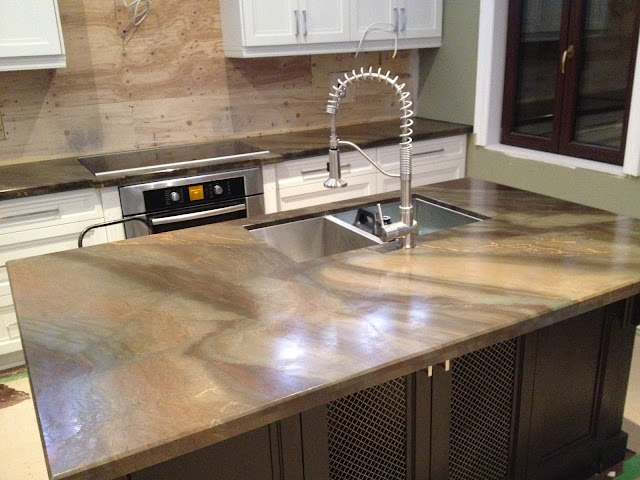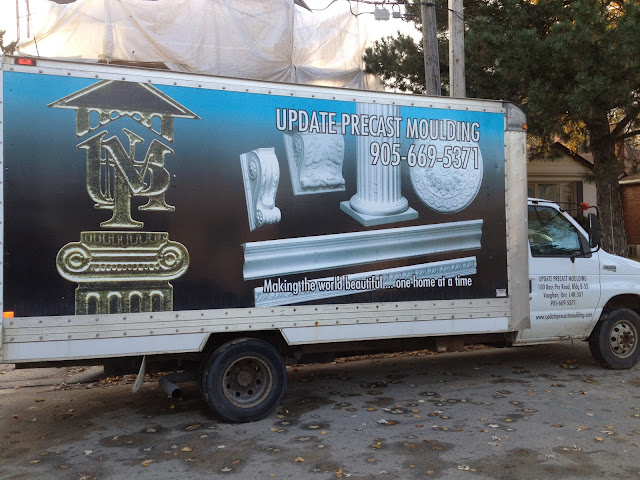Its -8 Celsius outside and nice and cozy inside our Passive House + 23 celsius with no extra Heat source running.
This Blog is about the design and building of one of the first Passive House projects in Toronto. We are converting a 60 year old Bungalow in to a 2 storey House with a 2 nd suite. Using all the design aspects of the German standard for a Passive House.
Wednesday, December 28, 2011
Tuesday, December 27, 2011
Thursday, December 22, 2011
Sunday, December 18, 2011
Thursday, December 15, 2011
Tuesday, December 13, 2011
Bax Cabinets Installers are Working hard Lights and Crown look amazing
Monday, December 12, 2011
A busy day custom Maple Kitchen installation started today by BAX Cabinets
Sunday, December 11, 2011
Saturday, December 10, 2011
The day has finally come Dan from Revolution Air and Heating is installing our Daikon Heat pump
Sunday, December 4, 2011
An intriguing new approach to heat-recovery ventilation
Lots of people like the performance of heat-recovery ventilators (HRVs), but not many people like the high cost of purchasing and installing the equipment. It’s complicated to run ventilation supply and exhaust ducts to seven or eight rooms, so the typical installed cost of an HRV is $2,000 to $3,000.
Is there a simpler way to provide ventilation that includes heat recovery? Perhaps. Four Seven Five will soon being distributing a small ventilation fan, the Lunos e2, manufactured by Lunos Lueftungstechnik of Berlin, Germany. The cylindrical Lunos e2 has a diameter of about 6 in. It is designed to be installed inside a wall, but the wall must be fairly thick, with a minimum thickness of 11 7/8 inch. Lunos e2 fans are fairly unobtrusive; the indoor cover plate measures 7 in. by 7 in.
Inside each Lunos e2 unit is a small 12-volt fan (powered by a transformer) and a perforated ceramic heat-storage disk. As air flows through the disk, the disk absorbs or gives up its heat.
Here’s the ingenious part of the Lunos e2 design: the fans are reversible. A Lunos fan is programmed to operate as a supply fan for 70 seconds, and then reverse itself and operate as an exhaust fan for 70 seconds. Fifty-one times per hour, the air flow reverses.
During the winter, the exhaust air stream heats up the ceramic disk. When the air flow reverses, the ceramic disk gives up its stored heat to the supply air stream. One minute later, the air flow reverses again, and the exhaust air streams heats the ceramic disk back up. The net result: The Lunos e2 is able to recover heat that would otherwise escape with the exhaust air stream.
The Lunos e2 fans are designed to be installed in pairs. A controller synchronizes the functions of the two fans: when one fan is operating as an exhaust fan, the other fan, which can be located some distance away, is operating as a supply fan.
Lunos e2 fans are very energy efficient. They draw only 2.8 watts at high speed (17.6 cfm). That’s an efficiency of 6.3 cfm/watt, about the same as a Panasonic FV-08VKS1 fan, which supplies 80 cfm at 11.3 watts (7 cfm/watt).
The Lunos e2 fan is rated at only 17.6 cfm. That’s not much.
How many Lunos e2 fans do you need for a small house? Let’s take an example: a 1,200-square-foot house with three occupants requires 35 cfm of continuous mechanical ventilation, according to the ASHRAE 62.2 formula of 7.5 cfm per occupant plus 1 cfm for every 100 square feet of occupiable floor area. So two pairs of 17.6-cfm Lunos fans would be adequate for such a house. (At any one time, two of the four fans would be operating as supply fans, and two as exhaust fans.)
The main disadvantage to the Lunos e2 fan is its high price. Four Seven Five plans to sell the fans for $1,200 a pair, or two pairs (the minimum number of fans necessary to ventilate a small house) for $2,250. That’s steep. So, to return to the question we started with — “is there a simpler way to provide ventilation that includes heat recovery?” — the answer is yes. Unfortunately, the simpler way is just as expensive as installing an HRV.
Friday, November 25, 2011
Tuesday, November 22, 2011
Another bussy day at the Passive House Toronto
Mason working on the Final Stone work in the Gabel area, Painters start priming the Drywall, Tiler laying tiles in Main Bathroom, Drywalling the Basement area. HRV keeping a fresh and clean supply of air without lossing any heat,
Monday, November 14, 2011
Wow Crown Moulding installed in one Day
Plaster Crown Mouldings look amazing this Guys are fast and good start a 6 am and Finnish at 2 pm full house of Mouldings.
Sunday, November 13, 2011
Joke of the day on Environmentalist
POSTED ON NOV 9 2011 BY TRISTAN ROBERTS

Image 1 of 4
The three-blade Alden hydroelectric turbine achieves high generation efficiency while allowing fish to pass through unscathed.
An environmentalist dies and reports to the pearly gates, but there is a mix-up and she is sent to the gates of hell. Once in hell, she is horrified by the air and water pollution, global warming, and habitat destruction. But she gets to work to improve the situation, and soon the hellscape is covered with grass and plants, the food is organic, the air is clean, and the people are happy.
One day, God calls Satan up on the telephone and says with a sneer, “So, how's it going down there in hell?” Satan tells God about the improvements brought by the environmentalist, and God says, “What? You've got an environmentalist? That's a mistake — send her up here or I’ll sue.” Satan laughs and answers, “Yeah, right. And just where are you going to get a lawyer?”
It takes all types to deal with our environmental problems — and today I’d like to focus on the researchers who are toiling away in laboratories, trying to eke out greater efficiencies from technologies that most of us never give any thought to. Here are some recent highlights that I have dug up.
Friday, November 11, 2011
Therm image proof of Ground loop performance
Here is the proof in field testing of Ground loop free heat from intake ground loop to HRV
 |
| Outside air intake of HRV ground loop -2 degrees Celsius |
 |
| Inside of House HRV ground loop temperature + 9,5 a difference of 11,5 degrees from out side air temp |
 |
| Exhaust Air of HRV of stale air from House 9,6 degrees only 0,1 degree difference from intake air |
Subscribe to:
Posts (Atom)














































